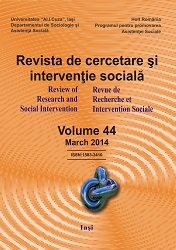Early Care Experiences and Later Functioning of Romanian Foster Children
Early Care Experiences and Later Functioning of Romanian Foster Children
Author(s): Sheri R. Parris, Simona CLIFF, Max E. Butterfield, David R. CROSS, Adrian V. Rus, Karyn B. PurvisSubject(s): Social Sciences
Published by: Expert Projects Publishing
Keywords: children; foster care; institutionalization; neglect; abuse; Romania.
Summary/Abstract: How do harsh early environments affect children’s development? The answer to this question is complex and difficult to determine for a variety of reasons. However, data obtained from the Romanian child-welfare system provided a new opportunity to approach this question. We examined the association between the pathways children followed leading to their placement in foster families and their behaviors. The four pathways identified were: (a) children placed directly from biological families into foster families, (b) children abandoned in nurseries before placement in foster families, (c) children abandoned in maternity wards before placement in foster families, and (d) children who resided in placement centers (formerly called orphanages) before placement in foster families. Overall, children in the Placement Center Pathway showed the most psychological and behavior problems, second was the Nursery Pathway, third was the Biological Family Pathway, and finally the Maternity Pathway had the least problems. It is important to note that it is not the intention of the present study to draw a definitive causal arrow between placement centers and later functioning. Data from the present study, and future studies of this type, will help policy-makers, practitioners, and researchers ascertain existing needs of these children so that future efforts to improve foster care may be directed to these areas.
Journal: Revista de Cercetare şi Intervenţie Socială
- Issue Year: 2014
- Issue No: 44
- Page Range: 20-43
- Page Count: 24
- Language: English

